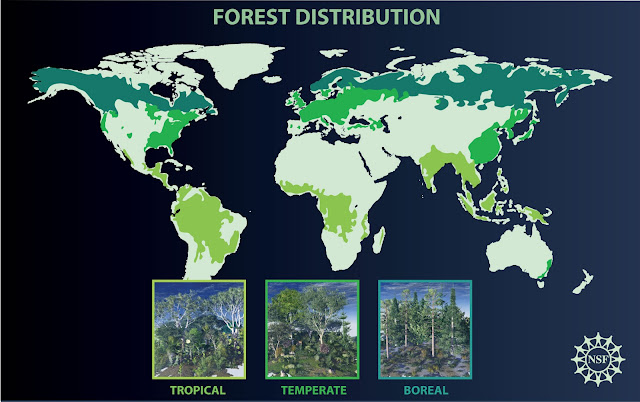Skip to main content
Where is the rainforest
Where is the rainforest
The map below shows the location of the world's tropical rainforests. Rainforests cover only a small part of the earth's surface - about 6%, yet they are home to over half the species of plants and animals in the world.
CENTRAL AMERICA
This region was once entirely covered with rainforest, but large areas have been cleared for cattle ranching and for sugar cane plantations.
Like other major rainforests, the jungles and mangrove swamps of Central America contain many plants and animals found nowhere else. Central America is famous for its large number of tropical birds, including many kinds of parrots.
CENTRAL AMERICA
This region was once entirely covered with rainforest, but large areas have been cleared for cattle ranching and for sugar cane plantations.
Like other major rainforests, the jungles and mangrove swamps of Central America contain many plants and animals found nowhere else. Central America is famous for its large number of tropical birds, including many kinds of parrots.
AFRICA
Central Africa holds the world's second largest rainforest. To the south east, the large island of Madagascar was once intensively forested, but now much of it is gone.
SOUTHERN ASIA
The rainforests of Asia stretch from India and Burma in the west to Malaysia and the islands of Java and Borneo in the east. Bangladesh has the largest area of mangrove forests in the world.
In Southeast Asia the climate is hot and humid all year round. In the mainland Asia it has a subtropical climate with torrential monsoon rains followed by a drier period.
AUSTRALASIA
Undergrowth Rainforest in Australia
Millions of years ago, Australia, New Zealand and the island of New Guinea formed part of a great forested southern continent, isolated from the rest of the world. Today these countries contain many different species of animal that occur nowhere else.
Undergrowth in Australia's tropical forests is dense and lush. The forests lie in the path of wet winds blowing in from the Pacific.

Rainforests are forests characterized by high rainfall, with annual rainfall in the case of tropical rainforests between 250 and 450 centimetres (98 and 177 in),and definitions varying by region for temperate rainforests. The monsoon trough, alternatively known as the intertropical convergence zone, plays a significant role in creating the climatic conditions necessary for the Earth's tropical rainforests.
Around 40% to 75% of all biotic species are indigenous to the rainforests. It has been estimated that there may be many millions of species of plants, insects and microorganisms still undiscovered in tropical rainforests. Tropical rainforests have been called the "jewels of the Earth" and the "world's largest pharmacy", because over one quarter of natural medicines have been discovered there.Rainforests are also responsible for 28% of the world's oxygen turnover, sometimes misnamed oxygen production, processing it through photosynthesis from carbon dioxide and consuming it through respiration.
The undergrowth in some areas of a rainforest can be restricted by poor penetration of sunlight to ground level. If the leaf canopy is destroyed or thinned, the ground beneath is soon colonized by a dense, tangled growth of vines, shrubs and small trees, called a jungle. The term jungle is also sometimes applied to tropical rainforests generally.




Comments